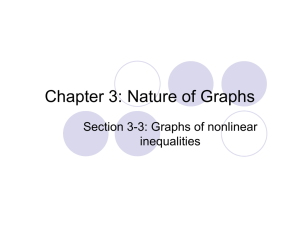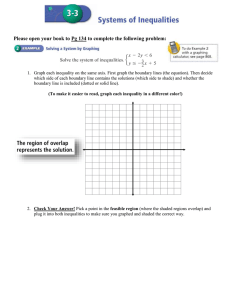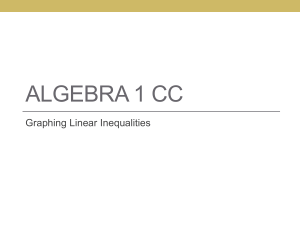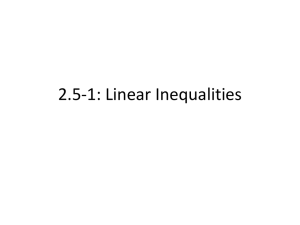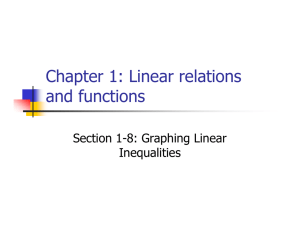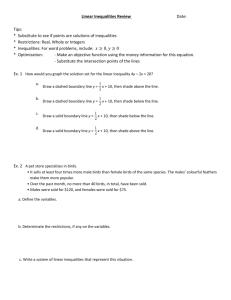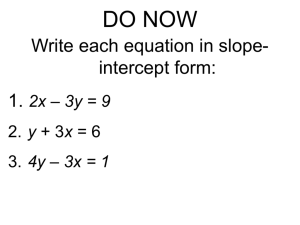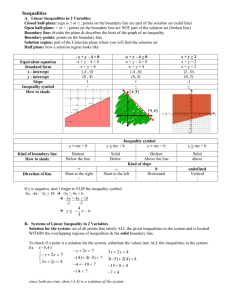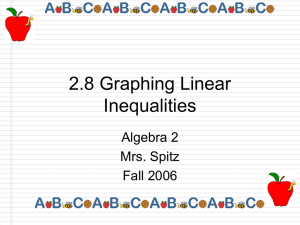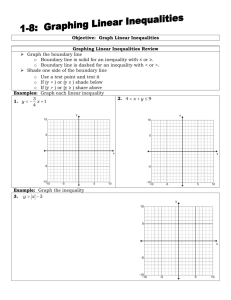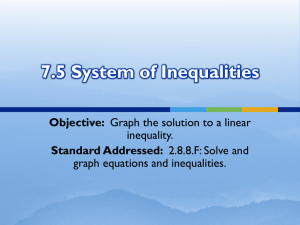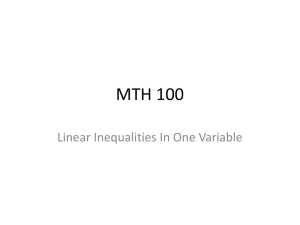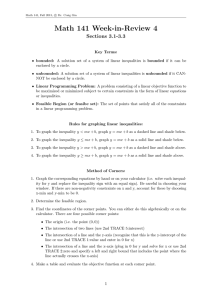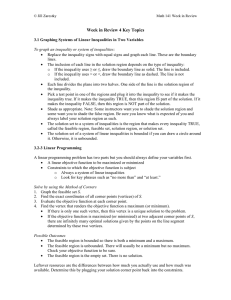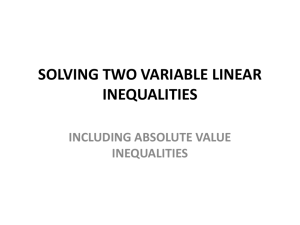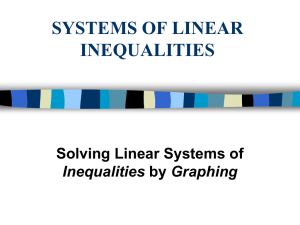Linear Inequalities In Two Variables
advertisement
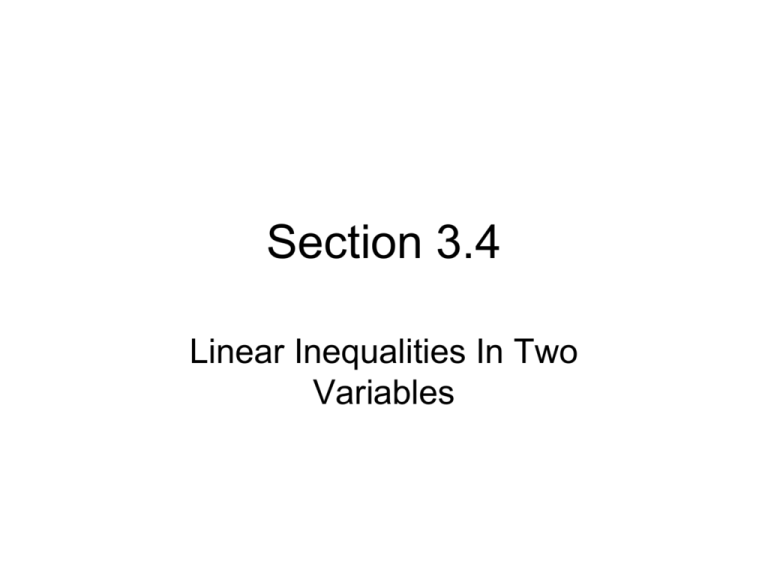
Section 3.4 Linear Inequalities In Two Variables Overview • In this section we learn to graph linear inequalities. • It is important to recognize the finished product of our efforts: Continued • The graph of a linear inequality in two variables will consist of: 1. A boundary line, either solid or dotted. 2. Shading on either side of the line. Definition • A linear inequality on two variables will be in the form: Ax By Ax By Ax By Ax By C C C C y mx b y mx b y mx b y mx b How to graph 1. Graph the boundary line. Use a solid boundary line for > or <, use a dotted boundary line for > or <. 2. Test a point—usually (0,0)—by substituting the point into the original inequality. 3. Shade the “point side” if the point makes a true statement. Shade opposite the “point side” if the point makes a false statement. Examples x + y < -3 4x – 5y > 20 x – 5y < 0 Compound Inequalities • “and” still means intersection, or overlap. • “or” still means union, or everything • Graph both inequalities using the steps previously discussed. • In MyLabsPlus, use the “paint can” to identify and shade your solution region. • On paper, shade your solution region darker than the rest of the graph. Examples x – y > 2 and x > 3 x + y < 2 or y > 3

